|
Autechre, "Draft 7:30"
Warp
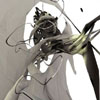 Inwiefern interessiert es den bzw. die Künstler vom Rezipenten verstanden zu werden bzw eine Kommunikationsbasis herzustellen ? Sind AE uns tatsächlich weit voraus in jedweder Hinsicht oder haben sie sich musikalisch nicht einfach eine Auszeit genommen um sich soweit im Abseitz zu positionieren das sich diese Frage garnicht mehr stellt ?
Inwiefern interessiert es den bzw. die Künstler vom Rezipenten verstanden zu werden bzw eine Kommunikationsbasis herzustellen ? Sind AE uns tatsächlich weit voraus in jedweder Hinsicht oder haben sie sich musikalisch nicht einfach eine Auszeit genommen um sich soweit im Abseitz zu positionieren das sich diese Frage garnicht mehr stellt ?
Womöglich sind sie gar die einzig wahren Androiden - Maschinensprache für Maschinenmenschen. Das Publikum dankt Ihnen jeglichen Hauch von Rhythmus und Melodie ergeben, keimt doch dadurch die Hoffnung des Einzelnen zum elitären Zirkel dazuzugehören - zu verstehen worum es "wirklich" geht.
Softwareprogrammierer und Hi-Tech Frickler als die idealen Überkonsumenten der Mediengesellschaft. Wichtig ist Ihnen nicht das Resultat sondern das Wie ? Keine Frage mehr nach dem Warum bzw. Wofür kristalliert sich heraus, wer will schon tiefer bohren wenn allein das Wie mehr als ausreichend Gesprächstoff bietet. Musikalischer Ausdruck als Abfallprodukt kreativen Programmierungswahns. Eine Sackgasse die AE meiner Ansicht nach bis zum Ende gegangen sind.
Mein Verdacht bestätigte sich durch ein aktuelles Interview in dem Sean Booth tatsächlich erklärt das sie diesmal fast auschließlich mit Programmen gearbeitet haben die sie beherrschen - im Gegentum zu den letzten beiden Alben die eher Testergebnisse der jeweils allerneusten Plug-In's waren und entmythisiert damit die als Manifeste der Abstraktion gefeierten Vorgänger gehörig.
Fortschritt durch Rückschritt ? Wer kann das schon noch beurteilen wenn mehr Tonträger veröffentlicht werden als der einzelne je Zeit haben wird zu hören. Hat die dekonstruierte Abstraktion allerdings ausgedient ? Autechre sind und bleiben dankbare Zielscheiben für die absurdesten Theorien - daran hat sich wieder einmal nichts geändert. - carsten s.
samples:

Mogwai, "Happy Songs For Happy People"
Matador
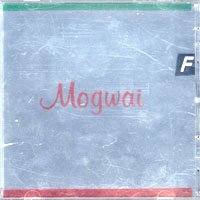 Mogwai have figured out how to take the energy of their long and noise-filled songs and condense them into even more atomic balls of might. Their fifth full-length is an album of rolling and mostly gentle melancholy. That isn't to say that Mogwai has lost their hard edge; the music does have its heavy moments. Most of the album has a subterranean or aquatic feeling to it, however. If the instruments aren't floating or weaving they're burrowing towards the warm center of the earth. "Hunted By a Freak" starts things out slowly and surely with a somewhat vocoded voice singing along unintelligibly in the background. The guitars have a bell-like effect to them and ring brightly throughout the track. The rhythm is tense and by the end of the song the mood has been set for an ecstatic experience. Though "Kids Will Be Skeletons" is an upbeat song (and a gorgeous one at that), the first heart-pounding, foot-stomping adventure is "Killing All the Flies." The vocoded voice of mystery makes its return on this one and sweetly caresses the air with the violins and the meandering guitars before everything erupts in a hail of triumph. Strangely enough, that's a great description for how a lot of this music feels. The melodies, though they sound lonely, also have a recovering feel to them; it's the sound of rising up and overcoming. "Ratts of the Capital" is the longest song on Happy Songs and it is the perfect release. I got shivers the first time I heard it and it just keeps sounding better and better. It makes me want to find a chainsaw and go on a rampage for some reason. Mogwai have found a great way of juxtaposing their noiser and heavier moments with their soft and and delicate ones. Overall I think this sets an example: a shotgun to the face doesn't need a ten minute introduction; it's powerful enough by itself. - Lucas Schleicher
Mogwai have figured out how to take the energy of their long and noise-filled songs and condense them into even more atomic balls of might. Their fifth full-length is an album of rolling and mostly gentle melancholy. That isn't to say that Mogwai has lost their hard edge; the music does have its heavy moments. Most of the album has a subterranean or aquatic feeling to it, however. If the instruments aren't floating or weaving they're burrowing towards the warm center of the earth. "Hunted By a Freak" starts things out slowly and surely with a somewhat vocoded voice singing along unintelligibly in the background. The guitars have a bell-like effect to them and ring brightly throughout the track. The rhythm is tense and by the end of the song the mood has been set for an ecstatic experience. Though "Kids Will Be Skeletons" is an upbeat song (and a gorgeous one at that), the first heart-pounding, foot-stomping adventure is "Killing All the Flies." The vocoded voice of mystery makes its return on this one and sweetly caresses the air with the violins and the meandering guitars before everything erupts in a hail of triumph. Strangely enough, that's a great description for how a lot of this music feels. The melodies, though they sound lonely, also have a recovering feel to them; it's the sound of rising up and overcoming. "Ratts of the Capital" is the longest song on Happy Songs and it is the perfect release. I got shivers the first time I heard it and it just keeps sounding better and better. It makes me want to find a chainsaw and go on a rampage for some reason. Mogwai have found a great way of juxtaposing their noiser and heavier moments with their soft and and delicate ones. Overall I think this sets an example: a shotgun to the face doesn't need a ten minute introduction; it's powerful enough by itself. - Lucas Schleicher
samples:
pole, "90/90"
Mute
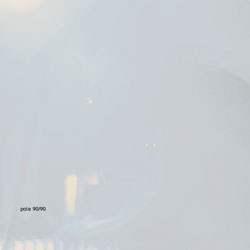 A few weeks backs, I reviewed Pole's 45/45 EP, the first in Stefan Betke's new trinity of releases, and my skepticism was thinly veiled. The addition of percussion and traditional instrumentation to the once purist minimal dub style that he helped pioneer left a question on my tongue: Would Pole still be relevant if he sounded like everyone else? Like many influential musicians before him, Pole may have released his best work already, and is progressing into the next phase of his career: where grumpy music geeks criticize every new release using as many hackneyed cliche phrases as possible. More often than not, those music geeks make valid points and the introduction of spoken word / rap has sealed Betke's fate in the music press. The hip hop flavored "Slow Motion" features Fat Jon over a head-nodding groove that will please backpackers and okayplayers, but will undoubtedly alienate those hoping for more of his glitchy dub. Fortunately, the instrumental version offers some relief and bears more of a resemblance to his earlier work, despite the prominent drum loop. In an act of self-indulgent excess, the disc closes with an acapella version that you can alternatively play over the older Pole songs that you'd rather hear. In the midst of all this is "I Can't Hear," a woefully bad hybrid of Pole's new fuller sound with John Zorn styled saxophone flatulence. Ultimately, all of these quasi-intelligent vocals and paint-by-numbers beats presented here sets the mood for what promises to be a letdown of a new full-length album. I haven't had the heart to disappoint myself fully by listening to the advance copy of the CD that I've had now for weeks. - Gary Suarez
A few weeks backs, I reviewed Pole's 45/45 EP, the first in Stefan Betke's new trinity of releases, and my skepticism was thinly veiled. The addition of percussion and traditional instrumentation to the once purist minimal dub style that he helped pioneer left a question on my tongue: Would Pole still be relevant if he sounded like everyone else? Like many influential musicians before him, Pole may have released his best work already, and is progressing into the next phase of his career: where grumpy music geeks criticize every new release using as many hackneyed cliche phrases as possible. More often than not, those music geeks make valid points and the introduction of spoken word / rap has sealed Betke's fate in the music press. The hip hop flavored "Slow Motion" features Fat Jon over a head-nodding groove that will please backpackers and okayplayers, but will undoubtedly alienate those hoping for more of his glitchy dub. Fortunately, the instrumental version offers some relief and bears more of a resemblance to his earlier work, despite the prominent drum loop. In an act of self-indulgent excess, the disc closes with an acapella version that you can alternatively play over the older Pole songs that you'd rather hear. In the midst of all this is "I Can't Hear," a woefully bad hybrid of Pole's new fuller sound with John Zorn styled saxophone flatulence. Ultimately, all of these quasi-intelligent vocals and paint-by-numbers beats presented here sets the mood for what promises to be a letdown of a new full-length album. I haven't had the heart to disappoint myself fully by listening to the advance copy of the CD that I've had now for weeks. - Gary Suarez
samples:
Simply Saucer, "Cyborgs Revisited"
Sonic Unyon
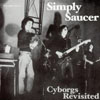 "This is some heavy metalloid music," declared Edgar Breau as he looked out from the roof of the Lloyd D. Jackson Shopping Center one day in 1975. "It's a song about the future, where unless you have a metal body, they aren't gonna let you walk the streets. No kidding." To the passing, most likely confused consumers that milled about below them, Simply Saucer must have seemed as if they had truly come from some paranoid, metallic future. In reality, they were a bunch of guys from Hamilton, Ontario who had Funhouse and White Light / White Heat scorched into their brains, plus a prescient affinity for dirty guitars and electronic manipulations. Over the course of their brief existence, Simply Saucer put out only one release, 1978's "She's a Dog" b/w "I Can Change My Mind" 45. That is, until 1989 saw the first issue of the Cyborgs Revisited LP, a compilation that combined the songs from their mall performance with six never before heard studio tracks (engineered by fellow Canadians Daniel and Robert Lanois, who went on to produce Peter Gabriel, Bob Dylan, and U2.) Cyborgs only saw the Simply Saucer cult grow, and for good reason. Now, Sonic Unyon rescues this lost classic from out of print oblivion, as well as adding seven unreleased demos plus the "She's a Dog" single. The result is a comprehensive testament to the brilliance of Simply Saucer's blend of vicious guitar slop and experimentation with analog electronics. Songs like "Instant Pleasure" and "Electro Rock" begin as simple odes of teenage crushes and idle imagination before disintegrating into maelstroms of frenetic guitar. The noisy, angular indulgence becomes draws even closer to abstraction when sine waves and synthesizers float in, creating a murky atmosphere that's equal parts temper tantrum and icy stare. The garage standard of the sexually frustrated teen, a la the Stooges "No Fun" takes on a less than innocent tone with Simply Saucer. "I'm cyanide over you," moans Breau on "Nazi Apocalypse," and later on the new demo "Little Sally," he menacingly bursts open on a rival, "I wanna kill that other guy / I'll punch him right between the eyes." "Mole Machine" is an instrumental assault whose bleats of sharp, metallic noise would not sound out of place on a Sonic Youth record. The climax of Cyborgs Revisited comes with "Illegal Bodies," the song Breau described as heavy metalloid music. It is a live ten-minute epic that careens about Breau's ranting and raving about the future of cyborgs before erupting into a free form solo section that is positively mind bending. The seven songs that make up the newly released demos were recorded after the departure of Ping Romany's electronics, and are far less maddened than the previous tracks. They do, however, retain the attitude and charm, and make for an excellent addendum to Cyborgs. The "She's a Dog" single, while good for completeness, falls far short of the bulk of Simply Saucers material, serving as the last gasp of a band that had already begun to call it a night. It's a minor stumble on an otherwise solid career-spanning document. Cyborgs Revisited is the aural equivalent of a paranoid delusion, a psychotic episode that clutches tightly until it shakes itself apart. - Michael Patrick Brady
"This is some heavy metalloid music," declared Edgar Breau as he looked out from the roof of the Lloyd D. Jackson Shopping Center one day in 1975. "It's a song about the future, where unless you have a metal body, they aren't gonna let you walk the streets. No kidding." To the passing, most likely confused consumers that milled about below them, Simply Saucer must have seemed as if they had truly come from some paranoid, metallic future. In reality, they were a bunch of guys from Hamilton, Ontario who had Funhouse and White Light / White Heat scorched into their brains, plus a prescient affinity for dirty guitars and electronic manipulations. Over the course of their brief existence, Simply Saucer put out only one release, 1978's "She's a Dog" b/w "I Can Change My Mind" 45. That is, until 1989 saw the first issue of the Cyborgs Revisited LP, a compilation that combined the songs from their mall performance with six never before heard studio tracks (engineered by fellow Canadians Daniel and Robert Lanois, who went on to produce Peter Gabriel, Bob Dylan, and U2.) Cyborgs only saw the Simply Saucer cult grow, and for good reason. Now, Sonic Unyon rescues this lost classic from out of print oblivion, as well as adding seven unreleased demos plus the "She's a Dog" single. The result is a comprehensive testament to the brilliance of Simply Saucer's blend of vicious guitar slop and experimentation with analog electronics. Songs like "Instant Pleasure" and "Electro Rock" begin as simple odes of teenage crushes and idle imagination before disintegrating into maelstroms of frenetic guitar. The noisy, angular indulgence becomes draws even closer to abstraction when sine waves and synthesizers float in, creating a murky atmosphere that's equal parts temper tantrum and icy stare. The garage standard of the sexually frustrated teen, a la the Stooges "No Fun" takes on a less than innocent tone with Simply Saucer. "I'm cyanide over you," moans Breau on "Nazi Apocalypse," and later on the new demo "Little Sally," he menacingly bursts open on a rival, "I wanna kill that other guy / I'll punch him right between the eyes." "Mole Machine" is an instrumental assault whose bleats of sharp, metallic noise would not sound out of place on a Sonic Youth record. The climax of Cyborgs Revisited comes with "Illegal Bodies," the song Breau described as heavy metalloid music. It is a live ten-minute epic that careens about Breau's ranting and raving about the future of cyborgs before erupting into a free form solo section that is positively mind bending. The seven songs that make up the newly released demos were recorded after the departure of Ping Romany's electronics, and are far less maddened than the previous tracks. They do, however, retain the attitude and charm, and make for an excellent addendum to Cyborgs. The "She's a Dog" single, while good for completeness, falls far short of the bulk of Simply Saucers material, serving as the last gasp of a band that had already begun to call it a night. It's a minor stumble on an otherwise solid career-spanning document. Cyborgs Revisited is the aural equivalent of a paranoid delusion, a psychotic episode that clutches tightly until it shakes itself apart. - Michael Patrick Brady
samples:
Flowchart, "Pre-2000 Singles and Comp Tracks Part One" & "Evergreen Noise
Is Flexible/The Spirit of Kenny G" & "Pre-2000 Singles and Comp Tracks Part
Two"
Fuzzy Box
Along with a morphing cast of co-conspirators, Sean O'Neal has spent the last decade or so slapping the Flowchart name onto an astoundingly large assortment of albums, EPs, singles, split releases, compilation tracks and more. While the project may now be associated primarily with self-described "quirky, half-assed electronic frolic," O'Neal and company have roots that are planted in the indie, shoegazer and space rock scenes, as evidenced quite nicely by much of the material on this ambitious trio of anthology discs.
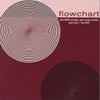 The fittingly but awkwardly titled Pre-2000 Singles and Comp Tracks Part One brings the listener back to Flowchart's earliest days, starting with the first 7" recorded by the trio of O'Neal, Brodie Budd and Craig Bottel and released in 1994 under the name Heroine. "High Phidelity" features the single-note guitar riffing and droning organ that led to the Stereolab comparisons that dogged them for the next couple of years, while "Pronoun-U" is a noise-pop gem with an unmistakable My Bloody Valentine vibe. A name change to Flowchart quickly followed, as did a slew of singles and compilation appearances, with the majority of those from 1994 to 1996 featured on this volume. Most of these were written and recorded by the original trio, with the work of that line-up fitting pretty comfortably into the mid-90s space-rock and shoegazer cubbyholes, and generally comparing favorably to most other similarly minded artists from that time frame such as Stereolab, Fuxa and Windy & Carl. Around the two-thirds mark of the disc, we hit the point where the group became a solo project for O'Neal, and the sound starts to vary considerably, ranging from twee guitar pop to naïve stabs at atmospheric electronica. The set is wrapped up nicely with an echo-laden cover version of The Sundays' "Here's Where The Story Ends."
The fittingly but awkwardly titled Pre-2000 Singles and Comp Tracks Part One brings the listener back to Flowchart's earliest days, starting with the first 7" recorded by the trio of O'Neal, Brodie Budd and Craig Bottel and released in 1994 under the name Heroine. "High Phidelity" features the single-note guitar riffing and droning organ that led to the Stereolab comparisons that dogged them for the next couple of years, while "Pronoun-U" is a noise-pop gem with an unmistakable My Bloody Valentine vibe. A name change to Flowchart quickly followed, as did a slew of singles and compilation appearances, with the majority of those from 1994 to 1996 featured on this volume. Most of these were written and recorded by the original trio, with the work of that line-up fitting pretty comfortably into the mid-90s space-rock and shoegazer cubbyholes, and generally comparing favorably to most other similarly minded artists from that time frame such as Stereolab, Fuxa and Windy & Carl. Around the two-thirds mark of the disc, we hit the point where the group became a solo project for O'Neal, and the sound starts to vary considerably, ranging from twee guitar pop to naïve stabs at atmospheric electronica. The set is wrapped up nicely with an echo-laden cover version of The Sundays' "Here's Where The Story Ends."
samples:
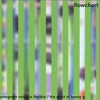 An ideal appendix/companion to the first Pre-2000 volume is Evergreen Noise Is Flexible/The Spirit of Kenny G, a disc that brings together two EPs that were originally released in 1996 on either side of the membership shake-up. Evergreen features four drone-rock tracks from the O'Neal/Budd/Bottel trio (joined on two tracks by Bill Nace), and the 12-minute title track holds an especially strong whiff of mid-90s Stereolab with its hypnotic guitar line, motorik drum rhythms, waves of moody organ and synth, and breathy vocals that are barely discernable beneath the swirling instrumental din. The point on this disc where Evergreen ends and the Kenny G material begins is an easy one to spot, as the second EP kicks of with a funky, "Theme From Shaft"-style guitar riff and clear baritone vocals intoning the strange statement "And I write my diary / In the spirit of Kenny G." Like the later tracks on the Part One anthology, this wes basically a Sean O'Neal solo record, and the five tracks veer in tone and style from the punchy "E-Flare Pop" (a pretty humorous ode to going to a rave and tripping on a combination of Ecstasy and Vapo-Rub) to the atmospheric ambient-drone of "Glorious and Prosperous" and "Drunken Mini-Musik."
An ideal appendix/companion to the first Pre-2000 volume is Evergreen Noise Is Flexible/The Spirit of Kenny G, a disc that brings together two EPs that were originally released in 1996 on either side of the membership shake-up. Evergreen features four drone-rock tracks from the O'Neal/Budd/Bottel trio (joined on two tracks by Bill Nace), and the 12-minute title track holds an especially strong whiff of mid-90s Stereolab with its hypnotic guitar line, motorik drum rhythms, waves of moody organ and synth, and breathy vocals that are barely discernable beneath the swirling instrumental din. The point on this disc where Evergreen ends and the Kenny G material begins is an easy one to spot, as the second EP kicks of with a funky, "Theme From Shaft"-style guitar riff and clear baritone vocals intoning the strange statement "And I write my diary / In the spirit of Kenny G." Like the later tracks on the Part One anthology, this wes basically a Sean O'Neal solo record, and the five tracks veer in tone and style from the punchy "E-Flare Pop" (a pretty humorous ode to going to a rave and tripping on a combination of Ecstasy and Vapo-Rub) to the atmospheric ambient-drone of "Glorious and Prosperous" and "Drunken Mini-Musik."
samples:
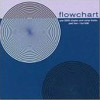 The third CD in this retrospective trilogy is Pre-2000 Singles and Comp
Tracks Part Two, a disc that gathers widely scattered tracks from 1997 to 1999. The first two tracks provide a solid link to the previous volume. "Rainbow Hotel" is a quirky pop number recorded with a full band and "Basement Noise is Flexible" is a somewhat fractured sounding outtake from the group's original line-up. Things change considerably from track three onwards, as O'Neal is joined by new partner Erin Anderson and the guitars are pretty much abandoned in exchange for electronics and samples. At first, the naïve melodies and repetitive vocal samples that appear on the bulk of these tracks are cute and fun, but the formula soon wears thin, and "cute and fun" quickly becomes "trite and annoying". They were probably fine when they were taken in small doses as 7" singles and compilation appearances, but 45 minutes of tracks that are so simple and saccharine is just too much to take at once. Thankfully, the "cute-tronica" mold is broken towards the end of the disc with a couple of pieces that are very ambient and atmospheric in tone, setting the stage for the more satisfying sounds that Flowchart has been responsible for from the year 2000 forward. - Greg Clow
The third CD in this retrospective trilogy is Pre-2000 Singles and Comp
Tracks Part Two, a disc that gathers widely scattered tracks from 1997 to 1999. The first two tracks provide a solid link to the previous volume. "Rainbow Hotel" is a quirky pop number recorded with a full band and "Basement Noise is Flexible" is a somewhat fractured sounding outtake from the group's original line-up. Things change considerably from track three onwards, as O'Neal is joined by new partner Erin Anderson and the guitars are pretty much abandoned in exchange for electronics and samples. At first, the naïve melodies and repetitive vocal samples that appear on the bulk of these tracks are cute and fun, but the formula soon wears thin, and "cute and fun" quickly becomes "trite and annoying". They were probably fine when they were taken in small doses as 7" singles and compilation appearances, but 45 minutes of tracks that are so simple and saccharine is just too much to take at once. Thankfully, the "cute-tronica" mold is broken towards the end of the disc with a couple of pieces that are very ambient and atmospheric in tone, setting the stage for the more satisfying sounds that Flowchart has been responsible for from the year 2000 forward. - Greg Clow
samples:
Sugarman Three, "Pure Cane Sugar"
Daptone
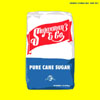 Raw honesty and incredible musicianship happens to make this white boy wanna shake his ass. Guitars, horns, organ, and the most groovtastic drums I've heard in a long time work together to drop one giant bomb of grimy funk. Sure, I've heard this sort of thing before and lets face it: this is the same kind of funk made during funk's heyday and it's a hard formula to change without totally spoiling that thing that makes funk so great. But Sugarman Three pull it off perfectly. Wah-wah pedals plaster the walls, organs jive and moan and dear me do they wail, and then there's drumming. I can't say enough about the team of Rudy Albin and Ernesto Abreu. Throughout the album they effortlessly create rhythms that pulse, flow, and force me to sway, tap my foot, or even get up out of my chair and dance the best I possibly can. Even the rather down-tempo "Modern Jive" has a groove to it that simply cannot be refused. "Funky So-and-So" is the veritable big-bang that starts this bad-boy off on the good foot and paves the way for the bad thing. Contained herein is a percussion breakdown made of pure sweet sugar, just as the title implies. "Shot Down" puts some serious tension in my stomach and gets my blood flowing, most of the time I want to scream right along with Lee Fields and it's hard to contain the excitement. (I feel bad for people that have to ride in my car with me when I listen to this.) The tension is real and the funk is hot. This is a lightning-fast record at just over fourty-one minutes long and I think I've had it on repeat for about ten plays now. Excuse me, but after listening to this I have the urge to go out and find myself a lady-friend to get down with, I'm feelin' a bit frisky. - Lucas Schleicher
Raw honesty and incredible musicianship happens to make this white boy wanna shake his ass. Guitars, horns, organ, and the most groovtastic drums I've heard in a long time work together to drop one giant bomb of grimy funk. Sure, I've heard this sort of thing before and lets face it: this is the same kind of funk made during funk's heyday and it's a hard formula to change without totally spoiling that thing that makes funk so great. But Sugarman Three pull it off perfectly. Wah-wah pedals plaster the walls, organs jive and moan and dear me do they wail, and then there's drumming. I can't say enough about the team of Rudy Albin and Ernesto Abreu. Throughout the album they effortlessly create rhythms that pulse, flow, and force me to sway, tap my foot, or even get up out of my chair and dance the best I possibly can. Even the rather down-tempo "Modern Jive" has a groove to it that simply cannot be refused. "Funky So-and-So" is the veritable big-bang that starts this bad-boy off on the good foot and paves the way for the bad thing. Contained herein is a percussion breakdown made of pure sweet sugar, just as the title implies. "Shot Down" puts some serious tension in my stomach and gets my blood flowing, most of the time I want to scream right along with Lee Fields and it's hard to contain the excitement. (I feel bad for people that have to ride in my car with me when I listen to this.) The tension is real and the funk is hot. This is a lightning-fast record at just over fourty-one minutes long and I think I've had it on repeat for about ten plays now. Excuse me, but after listening to this I have the urge to go out and find myself a lady-friend to get down with, I'm feelin' a bit frisky. - Lucas Schleicher
samples:
Tape, "Opera"
Hapna
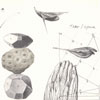 Tape's album Opera might be coming on the heels of the latest craze that pits guitar plucking and mouse clicking against each other in a sonic cage match of sorts, but it is nevertheless a fine example of the way that digital and acoustic instruments can work together seamlessly. The songs are made up of a variety of recorded instruments from guitar and horminca to melodica and accordian—instruments whose timbres are faithfully maintained rather than spliced into a trillion fragmented bits. The digital post-processing here serves to add a layer of grit to the otherwise folky melodies that carry most of the songs, and to interject the alien sounds that balance out the compositions. "Return To Ship" is indicative of the album's tone, and begins with rumbling low-end noise that builds through some droning instruments into a guitar passage that loops to serve the spinal cord for an organic organism composed of off-kilter static and atonal whines. What makes Opera work is the solid foundation of simple melodies that allow the musicians room to experiment with the details. Simple tines and glockenspiel phrases serve as the familiar, while swarms of processed bits and bytes fade into and out of the mix providing an exotic spice that keeps the songs from ever sounding simplistic. Many of the songs could almost be sweet if it weren't for the warbling effected drones and flittering digitalia that run throughout. In the end, Opera abandons sentimentality in exchange for a strange tension that works to elevate the laptop noodling and the instrument playing to something else entirely.- Matthew Jeanes
Tape's album Opera might be coming on the heels of the latest craze that pits guitar plucking and mouse clicking against each other in a sonic cage match of sorts, but it is nevertheless a fine example of the way that digital and acoustic instruments can work together seamlessly. The songs are made up of a variety of recorded instruments from guitar and horminca to melodica and accordian—instruments whose timbres are faithfully maintained rather than spliced into a trillion fragmented bits. The digital post-processing here serves to add a layer of grit to the otherwise folky melodies that carry most of the songs, and to interject the alien sounds that balance out the compositions. "Return To Ship" is indicative of the album's tone, and begins with rumbling low-end noise that builds through some droning instruments into a guitar passage that loops to serve the spinal cord for an organic organism composed of off-kilter static and atonal whines. What makes Opera work is the solid foundation of simple melodies that allow the musicians room to experiment with the details. Simple tines and glockenspiel phrases serve as the familiar, while swarms of processed bits and bytes fade into and out of the mix providing an exotic spice that keeps the songs from ever sounding simplistic. Many of the songs could almost be sweet if it weren't for the warbling effected drones and flittering digitalia that run throughout. In the end, Opera abandons sentimentality in exchange for a strange tension that works to elevate the laptop noodling and the instrument playing to something else entirely.- Matthew Jeanes
samples:
THE CINEMATIC ORCHESTRA, "MAN WITH A MOVIE
CAMERA"
Ninja Tune
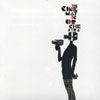 The concept of live music accompanying moving pictures is as old as cinema itself; pianists and organists often providing the soundtrack to the images that danced on the screens in darkened movie houses. In recent years, some musicians have renewed the interest in silent films of the day by performing their modern compositions along as an updated soundtrack. For J. Swinscoe and his Cinematic Orchestra, such a task is second nature, given the nature of the group's original concept that their name validates. Man With A Movie Camera is their current soundtrack to Russian film maker Dziga Vertov's 1929 classic of the same name. As a variant of the title also appeared as a track on last year's Every Day, the Cinematics would be the most likely candidates for such a project. The band recorded the disc's seventeen tracks live in the studio with the augmentation of a string trio and percussionist for a more cohesive performance. Man With A Movie Camera is comprised of renamed workings of selections from Every Day in which the live strings replace sampled ones, some new compositions, interludes and a few covers. "The Awakening of a Woman" is easily identifiable as last year's "Burn Out" from its slit-drum percussion intro and melodic strings progressions. The live performance and instrumentation give this track a more organic feel in comparison to the original recording. The newer "Odessa" and "The Magician" are delicate piano pieces performed by Jon Ellis with a classical touch that would probably sound all the more beautiful with the accompanying visuals for which they were intended. "Work It!" is best know by the aforementioned title track. Its mechanical feel of plucked strings and haunting soprano saxophone intro are very powerful in the live performance setting. The busy latin-jazz groove of "Reel Life" is performed almost note perfect from the remix "Evolution II" by the group's turntablist, Patrick Carpenter. Swinscoe and company again pay triubute to Lester Bowie and the Art Ensemble of Chicago with their renditions of the group's "Theme De Yoyo," "Theme Reprise" and "Yoyo Waltz" which manage to capture a playful energy in a funky environment. A DVD of the group in performance accompanying the original Man With A Movie Camera film is due out this week, at which point this already great soundtrack should become part of a more powerful medium. - Gord Fynes
The concept of live music accompanying moving pictures is as old as cinema itself; pianists and organists often providing the soundtrack to the images that danced on the screens in darkened movie houses. In recent years, some musicians have renewed the interest in silent films of the day by performing their modern compositions along as an updated soundtrack. For J. Swinscoe and his Cinematic Orchestra, such a task is second nature, given the nature of the group's original concept that their name validates. Man With A Movie Camera is their current soundtrack to Russian film maker Dziga Vertov's 1929 classic of the same name. As a variant of the title also appeared as a track on last year's Every Day, the Cinematics would be the most likely candidates for such a project. The band recorded the disc's seventeen tracks live in the studio with the augmentation of a string trio and percussionist for a more cohesive performance. Man With A Movie Camera is comprised of renamed workings of selections from Every Day in which the live strings replace sampled ones, some new compositions, interludes and a few covers. "The Awakening of a Woman" is easily identifiable as last year's "Burn Out" from its slit-drum percussion intro and melodic strings progressions. The live performance and instrumentation give this track a more organic feel in comparison to the original recording. The newer "Odessa" and "The Magician" are delicate piano pieces performed by Jon Ellis with a classical touch that would probably sound all the more beautiful with the accompanying visuals for which they were intended. "Work It!" is best know by the aforementioned title track. Its mechanical feel of plucked strings and haunting soprano saxophone intro are very powerful in the live performance setting. The busy latin-jazz groove of "Reel Life" is performed almost note perfect from the remix "Evolution II" by the group's turntablist, Patrick Carpenter. Swinscoe and company again pay triubute to Lester Bowie and the Art Ensemble of Chicago with their renditions of the group's "Theme De Yoyo," "Theme Reprise" and "Yoyo Waltz" which manage to capture a playful energy in a funky environment. A DVD of the group in performance accompanying the original Man With A Movie Camera film is due out this week, at which point this already great soundtrack should become part of a more powerful medium. - Gord Fynes
samples:
A Northern Chorus, "Spirit Flags"
Sonic Unyon
 I wonder what kind of shoes that members of A Northern Chorus wear. I feel confident in assuming that they are familiar with every nook and cranny of their footwear, from the wrinkles that ring their toes to the strains in the laces. I say this because I take Spirit Flags to be the product of some very attentive, and very detailed shoegazers; a deeply immersing listen that sweeps across you like a warm blanket. The album begins with the twinkling, lullaby melody of "Song and I," and as the music slowly fades closer to the fore, the dreamy vocal harmonies reveal themselves hovering through the instruments, blending themselves perfectly, neither standing out nor going unnoticed but giving the song an amazing buoyancy. The songs on Spirit Flags are excursions in texture and depth, the shortest track falling just short of the four-minute mark. Rarely does it seem that any track has overstayed its welcome, as the melodies and harmonies frequently expand and evolve into other forms amidst the guitar wash and plaintive contributions of flute and violin. On "Let the Parrots Speak for Themselves" and "Take Your Canvas Elsewhere," the reedy lead vocals at times evoke Dean Wareham, while often taking on a full-bodied tenor of their own. "Mombassa" is a somewhat darker track, mixing a spooky reverb with sampled sound bites of fire and brimstone preachers bellowing (seemingly at each other, but it's just the way the samples are overlaid) about God knows what, something about not believing in the resurrection. It makes for a rather effective mood piece, with the fervor and intensity of the speakers contrasting with the tentative, ethereal musical background like a splash of cold water in a warm bed. "I Dreamt the World had Ended" continues where "Mombassa" began, with dark lyrics about the sky exploding and choking fire being enveloped in a less than menacing arrangement. It doesn't seem at all dissonant or out of place, however. It is, after all, just a dream. For the most part, A Northern Chorus inhabits a limited range of tempo, and while some dynamics in that respect might have added more power to some of their songs, clearly they were aiming for a more subdued attack. That subtlety can be just as powerful as displayed in a brief break on 'Eilan Donan," with the music suddenly disappearing as ghostlike vocals intone, "We'll be right on your heels." In that short moment, it is immensely affecting. Spirit Flags slowly seeps along, at times beautiful and comforting. Whatever kind of shoes A Northern Chorus wears, they must be very interesting. - Michael Patrick Brady
I wonder what kind of shoes that members of A Northern Chorus wear. I feel confident in assuming that they are familiar with every nook and cranny of their footwear, from the wrinkles that ring their toes to the strains in the laces. I say this because I take Spirit Flags to be the product of some very attentive, and very detailed shoegazers; a deeply immersing listen that sweeps across you like a warm blanket. The album begins with the twinkling, lullaby melody of "Song and I," and as the music slowly fades closer to the fore, the dreamy vocal harmonies reveal themselves hovering through the instruments, blending themselves perfectly, neither standing out nor going unnoticed but giving the song an amazing buoyancy. The songs on Spirit Flags are excursions in texture and depth, the shortest track falling just short of the four-minute mark. Rarely does it seem that any track has overstayed its welcome, as the melodies and harmonies frequently expand and evolve into other forms amidst the guitar wash and plaintive contributions of flute and violin. On "Let the Parrots Speak for Themselves" and "Take Your Canvas Elsewhere," the reedy lead vocals at times evoke Dean Wareham, while often taking on a full-bodied tenor of their own. "Mombassa" is a somewhat darker track, mixing a spooky reverb with sampled sound bites of fire and brimstone preachers bellowing (seemingly at each other, but it's just the way the samples are overlaid) about God knows what, something about not believing in the resurrection. It makes for a rather effective mood piece, with the fervor and intensity of the speakers contrasting with the tentative, ethereal musical background like a splash of cold water in a warm bed. "I Dreamt the World had Ended" continues where "Mombassa" began, with dark lyrics about the sky exploding and choking fire being enveloped in a less than menacing arrangement. It doesn't seem at all dissonant or out of place, however. It is, after all, just a dream. For the most part, A Northern Chorus inhabits a limited range of tempo, and while some dynamics in that respect might have added more power to some of their songs, clearly they were aiming for a more subdued attack. That subtlety can be just as powerful as displayed in a brief break on 'Eilan Donan," with the music suddenly disappearing as ghostlike vocals intone, "We'll be right on your heels." In that short moment, it is immensely affecting. Spirit Flags slowly seeps along, at times beautiful and comforting. Whatever kind of shoes A Northern Chorus wears, they must be very interesting. - Michael Patrick Brady
samples:
James Tenney, "Selected Works 1961-1969"
New World
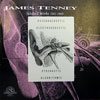 Tenney was the first composer to give a real workout to the computer composition techniques that would dominate the computer music scene from the 60s through to the 90s and that are still widely used today. He did this during two and a half years at Bell Telephone Labs beginning 1961 working closely with Max Mathews, the inventor of the MUSIC series of programming environments. The first of the pieces realised there, Noise Study, is surprisingly satisfying today for such an early experiment. It has the qualities of ocean or distant aircraft noise as heard through a tunnel getting nearer and farther, more and then less dynamic and complex. Very nicely judged and executed, the piece stands up well in the context of today's experimental music. Noise Study was entirely human composed and translated into sound by the computer functioning as an automated instrument reading a programmed score. But Tenny quickly set about extending the computer's involvement into the compositional process giving it the job of selecting some details of the music using random functions. These techniques closely parallel some of Xenakis' work on stochastic music. While Tenney hasn't achieved the fame or, in my opinion, quite the artistic success of the other, he did manage to produce some remarkable results. By devising ever more elaborate algorithms to take more control of the composition Tenney was able to surprise even himself with the resulting music; Dialogue, Phases and Fabric for Ché being the examples given in this collection, based on stochastic algorithm control of parametric noise/tone generators. Phases is a tense, mostly quiet alien conversation—music of such otherness that its like listening to people talking in Finnish but a hundred fold more baffling. Fabric for Ché is much louder, faster and more dynamic, making heavier use of noise. It manages to achieve some of the power and anger that Xenakis would show later in his works on the UPIC. What is striking is that Tenney, a newcomer to these computer technquies (as were all back then), managed to maintain aesthetic control of the automata he created. While the design of the systems was extremely abstract and technical the music is real music with a coherent personality and by no means merely an intererting experimental result. Other pieces in the collection include a player piano piece that is too random for me; the relatively famous For Ann (rising), a perceptual study using synchronised rising glissandi that is not to my taste at all; and Collage #1 ("Blue Suede") a delightful early tape manipulation piece entirely based on Evis Presley's song about his shoes. Reverential to the king and fully digging the groove of the source material it is not at all post-modern sounding. - Tom Worster
Tenney was the first composer to give a real workout to the computer composition techniques that would dominate the computer music scene from the 60s through to the 90s and that are still widely used today. He did this during two and a half years at Bell Telephone Labs beginning 1961 working closely with Max Mathews, the inventor of the MUSIC series of programming environments. The first of the pieces realised there, Noise Study, is surprisingly satisfying today for such an early experiment. It has the qualities of ocean or distant aircraft noise as heard through a tunnel getting nearer and farther, more and then less dynamic and complex. Very nicely judged and executed, the piece stands up well in the context of today's experimental music. Noise Study was entirely human composed and translated into sound by the computer functioning as an automated instrument reading a programmed score. But Tenny quickly set about extending the computer's involvement into the compositional process giving it the job of selecting some details of the music using random functions. These techniques closely parallel some of Xenakis' work on stochastic music. While Tenney hasn't achieved the fame or, in my opinion, quite the artistic success of the other, he did manage to produce some remarkable results. By devising ever more elaborate algorithms to take more control of the composition Tenney was able to surprise even himself with the resulting music; Dialogue, Phases and Fabric for Ché being the examples given in this collection, based on stochastic algorithm control of parametric noise/tone generators. Phases is a tense, mostly quiet alien conversation—music of such otherness that its like listening to people talking in Finnish but a hundred fold more baffling. Fabric for Ché is much louder, faster and more dynamic, making heavier use of noise. It manages to achieve some of the power and anger that Xenakis would show later in his works on the UPIC. What is striking is that Tenney, a newcomer to these computer technquies (as were all back then), managed to maintain aesthetic control of the automata he created. While the design of the systems was extremely abstract and technical the music is real music with a coherent personality and by no means merely an intererting experimental result. Other pieces in the collection include a player piano piece that is too random for me; the relatively famous For Ann (rising), a perceptual study using synchronised rising glissandi that is not to my taste at all; and Collage #1 ("Blue Suede") a delightful early tape manipulation piece entirely based on Evis Presley's song about his shoes. Reverential to the king and fully digging the groove of the source material it is not at all post-modern sounding. - Tom Worster
samples:
Kenneth Gaburo, "Five Works for Voices, Instruments, and Electronics"
New World
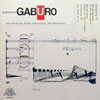 This collection is a curious combination of old and new. Gaburo, born 1926 was trained as a composer in the old school and is clearly influenced by pre-WW2 aesthetics and techniques but the music here combines this with free-wheeling new-world invention in the age of Cage. The oldest of these five pieces from 1956 is a string quartet that, while clearly comptetent, has more tutonic romanticism (in a decidedly Schoenberg style) than I prefer. Antiphony III and IV, dating from 62 and 67 respectively, both combine live musicians with electronic music on tape, both set miniature poems by Virginia Hommel, and both aim to create a continuum between the sounds of the singers and instruments and the electronic sounds. The continuum was achieved by composing the pieces as a whole and orchestrating them with musicians, recordings of the musicians, processed sounds from those recordings and synthetic sounds similar to all these. The result is convincing and at times approaches the lyricism of Nono and Berio's electro-acoustic music. But underlying it all is still clearly Schoenberg—Antiphony IV for tape and 16 voices being destinctly reminicent of the choral work of the father of serialism. But there is also a hint of Ligeti's Aventures and Nouvelles Aventures in the more outlandish vocal techniques used. In these two pieces I find that the combination of the old, in the formal and ensemble aspects, with the new, in the electronic and sound manipulation, actually works very well. They seem anchored in a familliar tradition while providing compelling innovative personal expression. Mouth-Piece: Sextet for Solo Trumpet (1970) on the other hand is hideous. It is an excercise in extended technique that would have been better left either to an improviser or to a composer who genuinely loves the trumpet. And that leaves The Flow of (u) a radically minimalistic piece for three voices all singing the same note continuously using the "u" phoneme (i.e. "oo") for 23 minutes. It is quintessential drone music that bears comparison to that of Phil Niblock. But while most drone music normally uses occasional changes to the component tones this piece uses just the minutest continual variation of pitch and tone color. The fact that this is sung by human voices is crucial to the success of the piece since the changing beats and colors arise form the singers continually working to match pitch with each other and to perfect their "u" sound. Extreme in its simplicity it works in they way all good drone music works: by captivating attention and drawing one into facination with the minute detail of the sound. - tom worster
This collection is a curious combination of old and new. Gaburo, born 1926 was trained as a composer in the old school and is clearly influenced by pre-WW2 aesthetics and techniques but the music here combines this with free-wheeling new-world invention in the age of Cage. The oldest of these five pieces from 1956 is a string quartet that, while clearly comptetent, has more tutonic romanticism (in a decidedly Schoenberg style) than I prefer. Antiphony III and IV, dating from 62 and 67 respectively, both combine live musicians with electronic music on tape, both set miniature poems by Virginia Hommel, and both aim to create a continuum between the sounds of the singers and instruments and the electronic sounds. The continuum was achieved by composing the pieces as a whole and orchestrating them with musicians, recordings of the musicians, processed sounds from those recordings and synthetic sounds similar to all these. The result is convincing and at times approaches the lyricism of Nono and Berio's electro-acoustic music. But underlying it all is still clearly Schoenberg—Antiphony IV for tape and 16 voices being destinctly reminicent of the choral work of the father of serialism. But there is also a hint of Ligeti's Aventures and Nouvelles Aventures in the more outlandish vocal techniques used. In these two pieces I find that the combination of the old, in the formal and ensemble aspects, with the new, in the electronic and sound manipulation, actually works very well. They seem anchored in a familliar tradition while providing compelling innovative personal expression. Mouth-Piece: Sextet for Solo Trumpet (1970) on the other hand is hideous. It is an excercise in extended technique that would have been better left either to an improviser or to a composer who genuinely loves the trumpet. And that leaves The Flow of (u) a radically minimalistic piece for three voices all singing the same note continuously using the "u" phoneme (i.e. "oo") for 23 minutes. It is quintessential drone music that bears comparison to that of Phil Niblock. But while most drone music normally uses occasional changes to the component tones this piece uses just the minutest continual variation of pitch and tone color. The fact that this is sung by human voices is crucial to the success of the piece since the changing beats and colors arise form the singers continually working to match pitch with each other and to perfect their "u" sound. Extreme in its simplicity it works in they way all good drone music works: by captivating attention and drawing one into facination with the minute detail of the sound. - tom worster
samples:
Uniform, "Not A Word"
Ad Noiseam
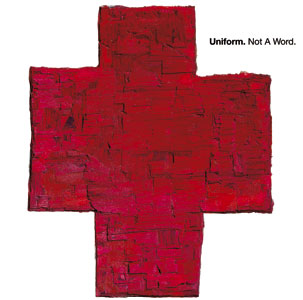 Success in the music business, as honorable as it is fleeting, grants a certain immunity which allows artists a level of creative freedom. Such liberties would be considered risky if indulged in by an unknown, but the same measures taken by an established act with a good sales track and a verbose publicist will often be viewed favorably. Groups like Radiohead and Autechre fit that profile. However, the man behind Uniform does not. His 2001 album for Mute Irony Is under the 2nd Gen moniker achieved, at least, a dignified level of media praise, being well-reviewed by both respectable and disgusting publications alike. Its noisy, filthy style of hip hop found champions (and collaborators) in peers like Dälek and Techno Animal. Unfortunately, I doubt that either of those acts would have much love for his debut release as Uniform. Released on the growing post-industrial record label Ad Noiseam, Not A Word lacks the substance of the 2nd Gen project. Nearly devoid of actual content, the album sounds much more like a collection of segues and interludes than a full-length album. This sixteen track disc could have been comfortably reduced to a less pretentious, more concise EP, if even that. I'd offer more information and opinion about this release, but, in fairness, it doesn't deserve it. With any luck, Flicknives, the upcoming 2nd Gen follow-up album to be released on Quatermass, will prove to be a far more worthwhile listen. - Gary Suarez
Success in the music business, as honorable as it is fleeting, grants a certain immunity which allows artists a level of creative freedom. Such liberties would be considered risky if indulged in by an unknown, but the same measures taken by an established act with a good sales track and a verbose publicist will often be viewed favorably. Groups like Radiohead and Autechre fit that profile. However, the man behind Uniform does not. His 2001 album for Mute Irony Is under the 2nd Gen moniker achieved, at least, a dignified level of media praise, being well-reviewed by both respectable and disgusting publications alike. Its noisy, filthy style of hip hop found champions (and collaborators) in peers like Dälek and Techno Animal. Unfortunately, I doubt that either of those acts would have much love for his debut release as Uniform. Released on the growing post-industrial record label Ad Noiseam, Not A Word lacks the substance of the 2nd Gen project. Nearly devoid of actual content, the album sounds much more like a collection of segues and interludes than a full-length album. This sixteen track disc could have been comfortably reduced to a less pretentious, more concise EP, if even that. I'd offer more information and opinion about this release, but, in fairness, it doesn't deserve it. With any luck, Flicknives, the upcoming 2nd Gen follow-up album to be released on Quatermass, will prove to be a far more worthwhile listen. - Gary Suarez
samples:
Nobukazu Takemura, "Assembler / Assembler 2"
Thrill Jockey
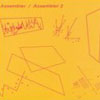 Released just a few months after the rigid 10th, Nobukazu Takemura's newest is an adventure in minimalism that is as restorative as a long vacation taken after going too long without a break. Too often have I heard sound collages that seem to go nowhere; they simply run about in circles covering the same old ground for the duration of fifteen or twenty minutes or more. Thankfully, Assembler/Assembler 2 is about as predictable as a piano falling out of a building. Each track is a creature in and of itself, suitable for individual release, and captivating both sonically and melodically. Despite the obvious connection to noise music and modern compositions, this album is full of gorgeous melodic tones and hidden harmonies stretched across almost subconscious space. "Conical Flask" gets things off the ground smoothly with a series of skipping tones that all fit together perfectly and form an abstract and rolling melody that jumps from one ear to another. "USINE" and "Ligne à haute tension" are more disturbing and grinding. They're not completely barrages of sound, but the impression they leave with me is the image of two chainsaws being rammed into eachother or perhaps the sight of heavy artillery exploding far in the distance. In either case, they work well next to the more haunting and accessible songs. "Kino-ear" is a favorite of mine and it definitely feels like the centerpiece of the album, it seems to have the most gravity and it is also the longest track. Throughout its nearly fourteen minute duration "Kino-ear" shifts from subtle glass-like ringing and aqueous gurglings to guitar meanderings. Sometimes the movement from one sound to the next isn't so polar and sometimes the changes happen abruptly, but they never happen annoyingly. The sounds don't necessarily always blend together perfectly but they do form a coherent whole: the sudden shift from guitar sounds to car horns to the audible splash of feet in puddles somehow makes sense. Each composition is like a short film viewed through LSD-tinted eyes. It's not that the music is all that "trippy," it's the thematic qualities and the total individuality of every track that ends up producing a disorienting but cohesive hallucinogenic trip. - Lucas Schleicher
Released just a few months after the rigid 10th, Nobukazu Takemura's newest is an adventure in minimalism that is as restorative as a long vacation taken after going too long without a break. Too often have I heard sound collages that seem to go nowhere; they simply run about in circles covering the same old ground for the duration of fifteen or twenty minutes or more. Thankfully, Assembler/Assembler 2 is about as predictable as a piano falling out of a building. Each track is a creature in and of itself, suitable for individual release, and captivating both sonically and melodically. Despite the obvious connection to noise music and modern compositions, this album is full of gorgeous melodic tones and hidden harmonies stretched across almost subconscious space. "Conical Flask" gets things off the ground smoothly with a series of skipping tones that all fit together perfectly and form an abstract and rolling melody that jumps from one ear to another. "USINE" and "Ligne à haute tension" are more disturbing and grinding. They're not completely barrages of sound, but the impression they leave with me is the image of two chainsaws being rammed into eachother or perhaps the sight of heavy artillery exploding far in the distance. In either case, they work well next to the more haunting and accessible songs. "Kino-ear" is a favorite of mine and it definitely feels like the centerpiece of the album, it seems to have the most gravity and it is also the longest track. Throughout its nearly fourteen minute duration "Kino-ear" shifts from subtle glass-like ringing and aqueous gurglings to guitar meanderings. Sometimes the movement from one sound to the next isn't so polar and sometimes the changes happen abruptly, but they never happen annoyingly. The sounds don't necessarily always blend together perfectly but they do form a coherent whole: the sudden shift from guitar sounds to car horns to the audible splash of feet in puddles somehow makes sense. Each composition is like a short film viewed through LSD-tinted eyes. It's not that the music is all that "trippy," it's the thematic qualities and the total individuality of every track that ends up producing a disorienting but cohesive hallucinogenic trip. - Lucas Schleicher
samples:
Kawabata Makoto "I'm Here Still Now (Live at La Chapelle)"
Ochre
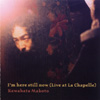 When talking about the music of Kawabata Makoto or his band Acid Mothers Temple, it's difficult to avoid the issue of quality control. Because there will always be someone anxious to publish every sonic utterence that Makoto commits to tape, and because Makoto appears to indulge anyone who asks him for an album, the ratio of albums to fully thought-out ideas is weighted heavily towards the former. "I'm Here Still Now" is another unnecessary addition to his inexplicably growing catalog. It is a mediocre, nearly bootleg-quality quality audience recording of an improvised solo guitar and sarangi concert he gave in Toulouse in 2002.
As an improviser, Makoto can be great in a rock context; when he plays in Acid Mothers Temple or with improv/rock bands Musica Transonic or Mainliner, he can wail like hell. But on this recording he seems confused, even bored. He begins with the tentative drone of feedback through a delay effect. If you've ever been around a guitarist who plays with a rack delay for the first time, you've heard these sounds before. After ten minutes of noodling without arriving anywhere, he switches to a bowed sarangi through tons of reverb. I get the feeling that reverb here is used as a cheap way to imply gravity, to cover up the uncompelling music with an emotionally-charged technological shorthand. He attempts a few directions here, but does not commit to any of them. Unsurprisingly, he finishes by turning his digital delay effects back on and doing the first trick again, only for a longer amount of time. It succeeds in becoming a drone only by definition, though I get the feeling that Makoto was trying for some transcendental bliss such that Phil Niblock and Keiji Haino achieve. What could it mean that, when listening to "I'm Here Still Now", I hear the musician's effects more than I hear the music he's making? And why did some editor not remove the audible digital clip at the 20-minute mark, the sound of audience members coughing and shifting in thier seats, or of glasses clinking? Perhaps there is such a rush to release more Makoto product that the merit of each individual album is not fully considered. - Howard Stelzer
When talking about the music of Kawabata Makoto or his band Acid Mothers Temple, it's difficult to avoid the issue of quality control. Because there will always be someone anxious to publish every sonic utterence that Makoto commits to tape, and because Makoto appears to indulge anyone who asks him for an album, the ratio of albums to fully thought-out ideas is weighted heavily towards the former. "I'm Here Still Now" is another unnecessary addition to his inexplicably growing catalog. It is a mediocre, nearly bootleg-quality quality audience recording of an improvised solo guitar and sarangi concert he gave in Toulouse in 2002.
As an improviser, Makoto can be great in a rock context; when he plays in Acid Mothers Temple or with improv/rock bands Musica Transonic or Mainliner, he can wail like hell. But on this recording he seems confused, even bored. He begins with the tentative drone of feedback through a delay effect. If you've ever been around a guitarist who plays with a rack delay for the first time, you've heard these sounds before. After ten minutes of noodling without arriving anywhere, he switches to a bowed sarangi through tons of reverb. I get the feeling that reverb here is used as a cheap way to imply gravity, to cover up the uncompelling music with an emotionally-charged technological shorthand. He attempts a few directions here, but does not commit to any of them. Unsurprisingly, he finishes by turning his digital delay effects back on and doing the first trick again, only for a longer amount of time. It succeeds in becoming a drone only by definition, though I get the feeling that Makoto was trying for some transcendental bliss such that Phil Niblock and Keiji Haino achieve. What could it mean that, when listening to "I'm Here Still Now", I hear the musician's effects more than I hear the music he's making? And why did some editor not remove the audible digital clip at the 20-minute mark, the sound of audience members coughing and shifting in thier seats, or of glasses clinking? Perhaps there is such a rush to release more Makoto product that the merit of each individual album is not fully considered. - Howard Stelzer
samples:
Kaito, "Special Love"
Kompakt
 Kaito's hardcore fans may be thrilled with Special Love, but I certainly am not. While Kaito's album Special Life may work for those looking for a trance/deep house hybrid to keep the party rolling at 4 am, Special Love is merely a fragment of its predecessor; the same songs stripped of their beats, but not imbued with anything more. Seven tracks of beatless chill-out trance would have been fine, but as these songs were obviously written with beats and dance structures in mind, the songs sans-percussion sound lacking, empty, and half-done. To be honest, I wasn't aware upon first listening that this was in fact a sort of "companion piece" to an album with beats, and even when hearing these songs for the first time I couldn't shake the feeling that they were missing something. Remix albums can be dubious marketing ploys or great works of post-modern recontexturalization, or something of a mixture of the two, but this disc fails to satisfy in almost every way by providing nothing new and by crippling songs that are normally intentionally laden with genre-cliches. Here, the cliches might have helped because I can't help but hear the 16th note high hats and rising crash cymbal patters that should be leading into and out of the obvious hooks. As a DJ tool to help those so-inclined make continuous, eternal remixes of these songs on their own, Special Love is probably a godsend, but as an album being judged apart from its predecessor, it fails heartily to leave a mark. Kaito and Kompakt should take a not from Cex and release things like this in the future as a double-pack CD, rather than try to milk the remaining life out of an album a second time. Kompakt usually hits them out of the park with solid releases of minimal techno, but this was not a good idea.- Matthew Jeanes
Kaito's hardcore fans may be thrilled with Special Love, but I certainly am not. While Kaito's album Special Life may work for those looking for a trance/deep house hybrid to keep the party rolling at 4 am, Special Love is merely a fragment of its predecessor; the same songs stripped of their beats, but not imbued with anything more. Seven tracks of beatless chill-out trance would have been fine, but as these songs were obviously written with beats and dance structures in mind, the songs sans-percussion sound lacking, empty, and half-done. To be honest, I wasn't aware upon first listening that this was in fact a sort of "companion piece" to an album with beats, and even when hearing these songs for the first time I couldn't shake the feeling that they were missing something. Remix albums can be dubious marketing ploys or great works of post-modern recontexturalization, or something of a mixture of the two, but this disc fails to satisfy in almost every way by providing nothing new and by crippling songs that are normally intentionally laden with genre-cliches. Here, the cliches might have helped because I can't help but hear the 16th note high hats and rising crash cymbal patters that should be leading into and out of the obvious hooks. As a DJ tool to help those so-inclined make continuous, eternal remixes of these songs on their own, Special Love is probably a godsend, but as an album being judged apart from its predecessor, it fails heartily to leave a mark. Kaito and Kompakt should take a not from Cex and release things like this in the future as a double-pack CD, rather than try to milk the remaining life out of an album a second time. Kompakt usually hits them out of the park with solid releases of minimal techno, but this was not a good idea.- Matthew Jeanes
samples:
We know that sometimes these CDs are somewhat challenging to find, which is why we have a community section which can be used to obtain nearly everything available on this site. |
|

WEEK OF JUNE 15 - JUNE 21
AFX - Smojphace 12"/CDEP (Men/Rephlex, UK)
Animal Collective - Here Comes The Indian CD/LP (Paw Tracks/Carpark, US)
As One - So Far... (So Good) 2xCD/3xLP [anthology of early singles and other tracks] (Ubiquity, US)
Atrabilis Sunrise - Aesthetics of Self-Destruction 7" (Formosan, Germany)
Davide Balula - Pellicule CD (Active Suspension, France)
John Beltran - t.b.a. 12" (Ubiquity, US)
* Big Juss/NMS - Woe To Thee O Land When Thy King Is A Child CD/2xLP (Big Dada/Ninja Tune, Canada/US)
* Bola - Soup CD/LP [reissue] (Skam, UK)
* Bonobo - Dial M for Monkey CD/2xLP (Ninja Tune, Canada/US)
* Glenn Branca - The Ascension CD (Acute/Carpark, US)
dj Cheb i Sabbah/Various - As Far As CD (Six Degrees, US)
The Cinematic Orchestra - Man With A Movie Camera DVD (Ninja Tune, Canada/US)
Colder - Again CD/LP (Output, UK)
* Erasure - Loveboat CD (Mute, US)
The Faint - The Conductor/Glass Danse 12" (Astralwerks, US)
Faith & Disease - Passport To Kunming CD (Projekt, US)
* Lisa Gerrard - Whalerider soundtrack CD (4AD, US/Canada)
H-Foundation - Environments CD/LP (Astralwerks, US)
hawaii - hawaii CD (Paper Bag, Canada)
* Jaga Jazzist - The Stix CD/2xLP (Ninja Tune, Canada/US)
* Jaga Jazzist - A Living Room Hush CD/2xLP (Ninja Tune, Canada/US)
Jazzupstarts - Are You OK? CD (Nutone/Nettwerk, Canada/US)
King Geedorah - Take Me To Your Leader CD/2xLP (Big Dada/Ninja Tune, UK/Canada/US)
Mogwai - Happy Songs for Happy People CD/LP (Matador, US/Canada)
Muslimgauze - Dome of the Rock CD (Ant-Zen, Germany)
Nymphomatriarch [Hecate & Venetian Snares] - Nymphomatriarch CD/LP (Hymen, Germany)
Onry Ozzborn - The Grey Area CD/LP (One Drop, US)
Papa M - Three CDEP (Drag City, US)
Platinum Pied Pipers - Ridin' High/Open Your Eyes 12" (Ubiquity, US)
Pole - 90/90 12"/CDEP (Mute, UK/US)
R.E.C. - Batter Up 12" (Eevolute, The Netherlands)
Referencered - For Your Safety CD (Pork, UK)
Richard X vs. Liberty X - Being Nobody 12" (Astralwerks, US)
Royksopp - Sparks 12"/CDEP (Wall of Sound, UK)
Saloon - t.b.a. CD (Darla, US)
Seen - Many In High Places Are Not Well CD/LP (Bubble Core, US)
Sense - Learning To Be CD (U-Cover, Belgium)
Aidan Smith - At Home With 2 12"/CDEP (Twisted Nerve, UK)
Strand - Messages CD (Delsin, The Netherlands)
The Suntanama - Another CD/LP (Drag City, US)
* Amon Tobin - Verbal Remixes 12" [mixes by Prefuse 73, Boom Bip, Kid 606 & Topogigio] (Ninja Tune, Canada/US)
Amon Tobin - Collaborations & Verbal Remixes CDEP (Ninja Tune, Canada/US)
* Tricky - Vulnerable CD (Sanctuary, US/Canada)
Sweet Trip - velocity:design:comfort CD (Darla, US)
John Thomas/Fumiya Tanaka - Deepen 12" (Logistic, France)
Mark Tranmer - Bright Days In Winter: Bliss Out v.20 CD (Darla, US)
* Ty - We Don't Care 12" (Big Dada/Ninja Tune, Canada/US)
* Various - 28 Days Later soundtrack CD (XL Recordings, Canada)
Various - Headspace 2003 Sampler 12" [with Arne Weinberg, Fabrice Lig, Rei Loci & Derek Carr] (Headspace, Scotland)
Various - Lost On Arrival CD (Naked/Astralwerks, US)
Vromb - Locomotive 10" (Angle Rec, Canada)
Yotoko - All Creation Remixes 12" (Delsin, The Netherlands)
This is simply this week's highlights from the NEW RELEASES provided by Greg and Feedback Monitor.
For a more detailed schedule stretching into the future, please check out the site,
since release dates can and will often change.
|